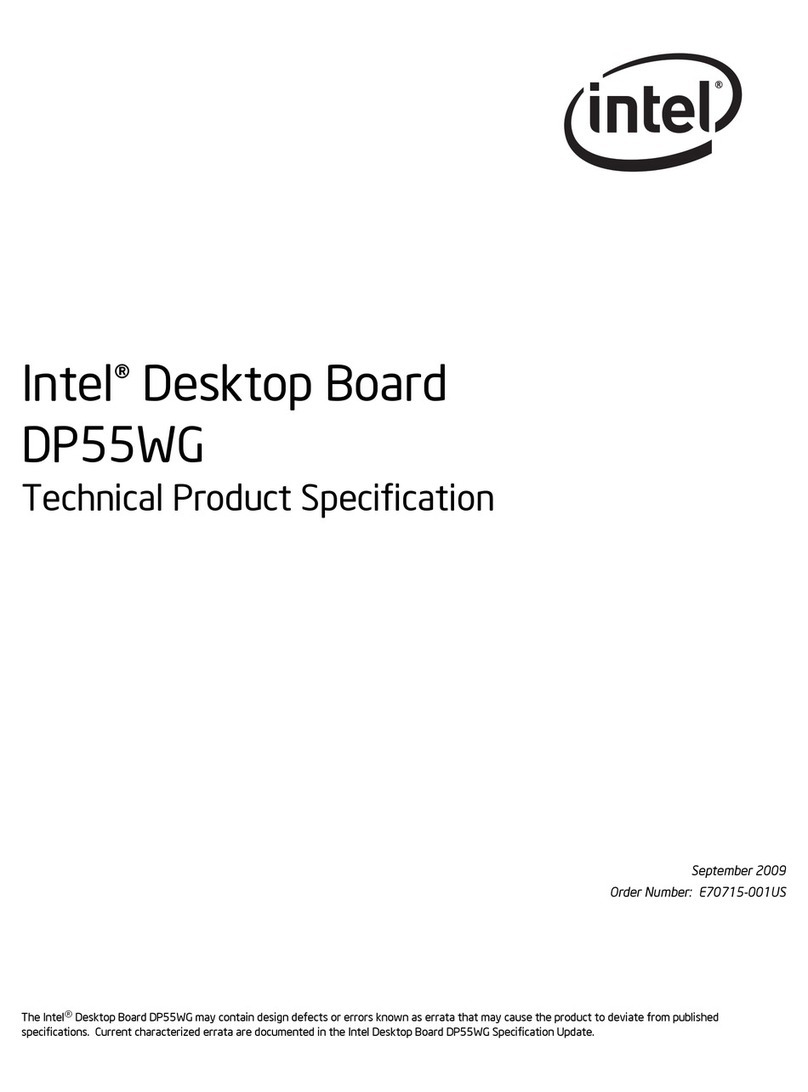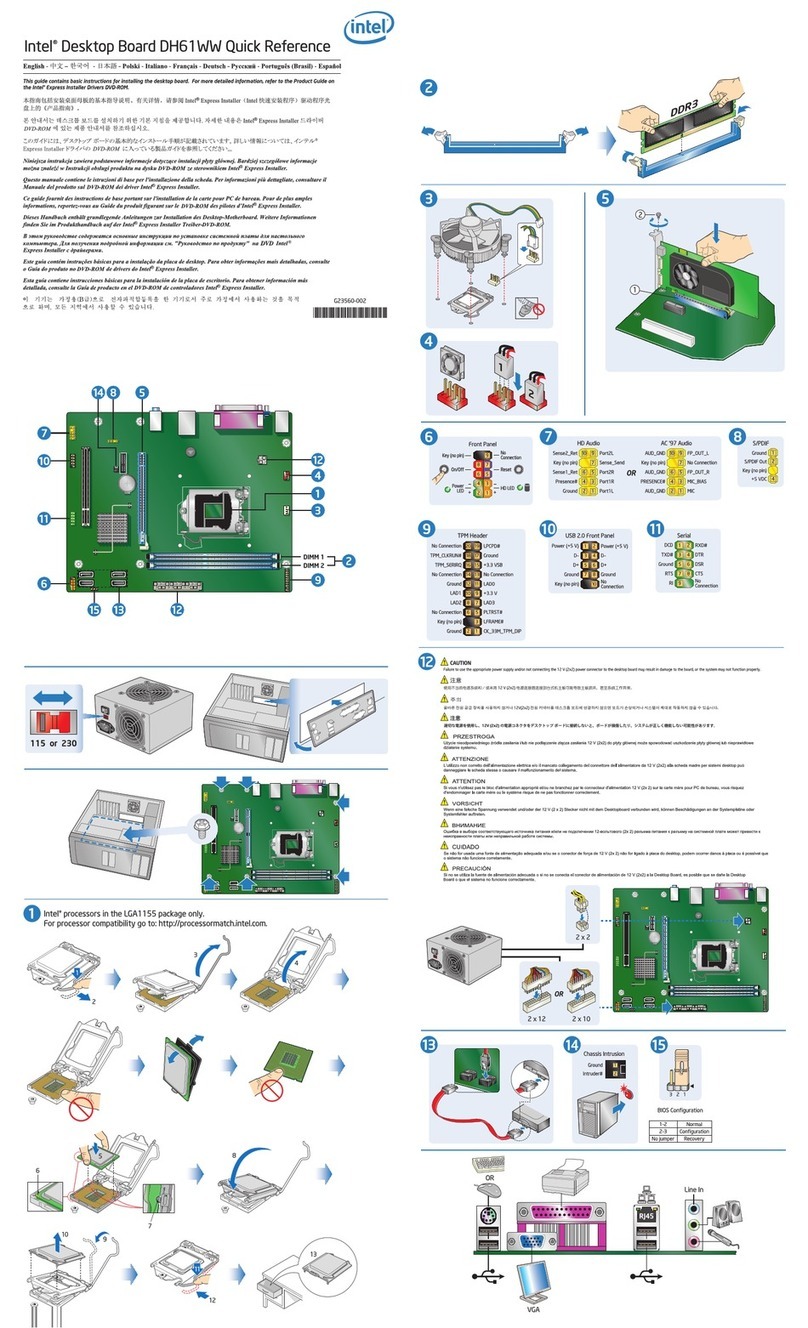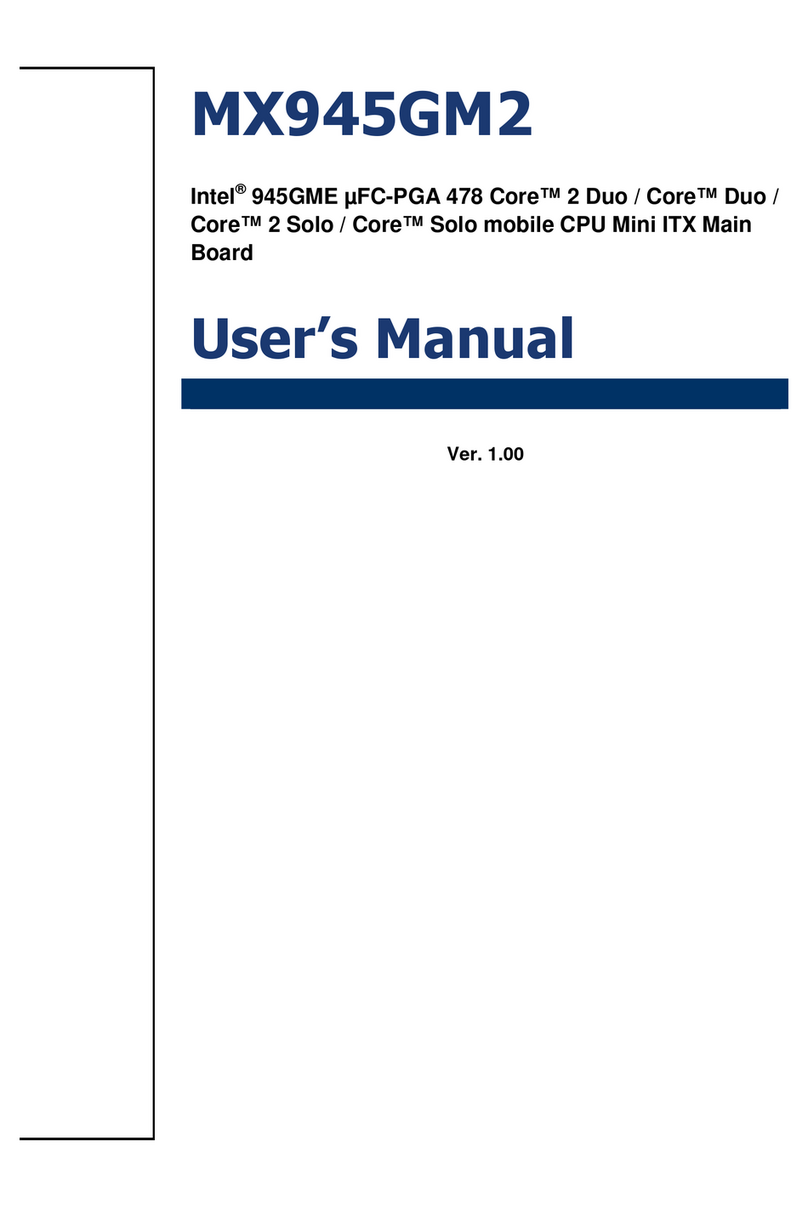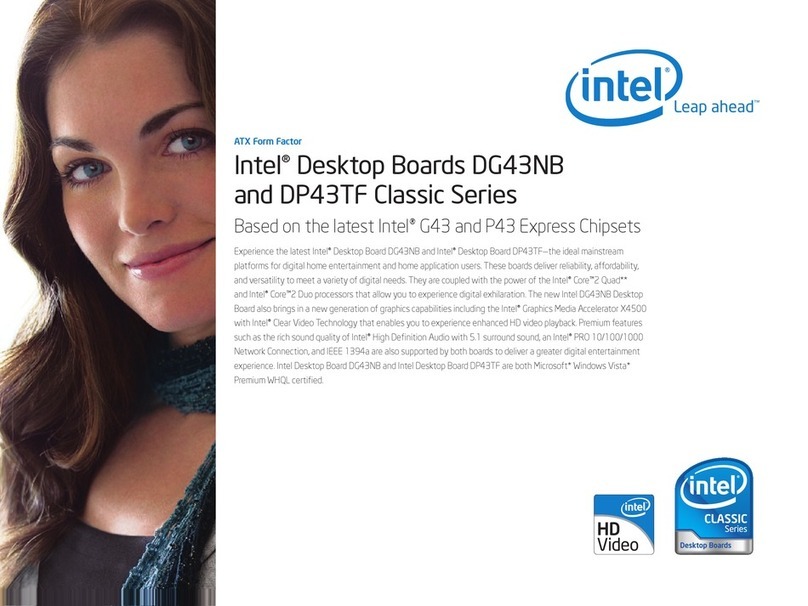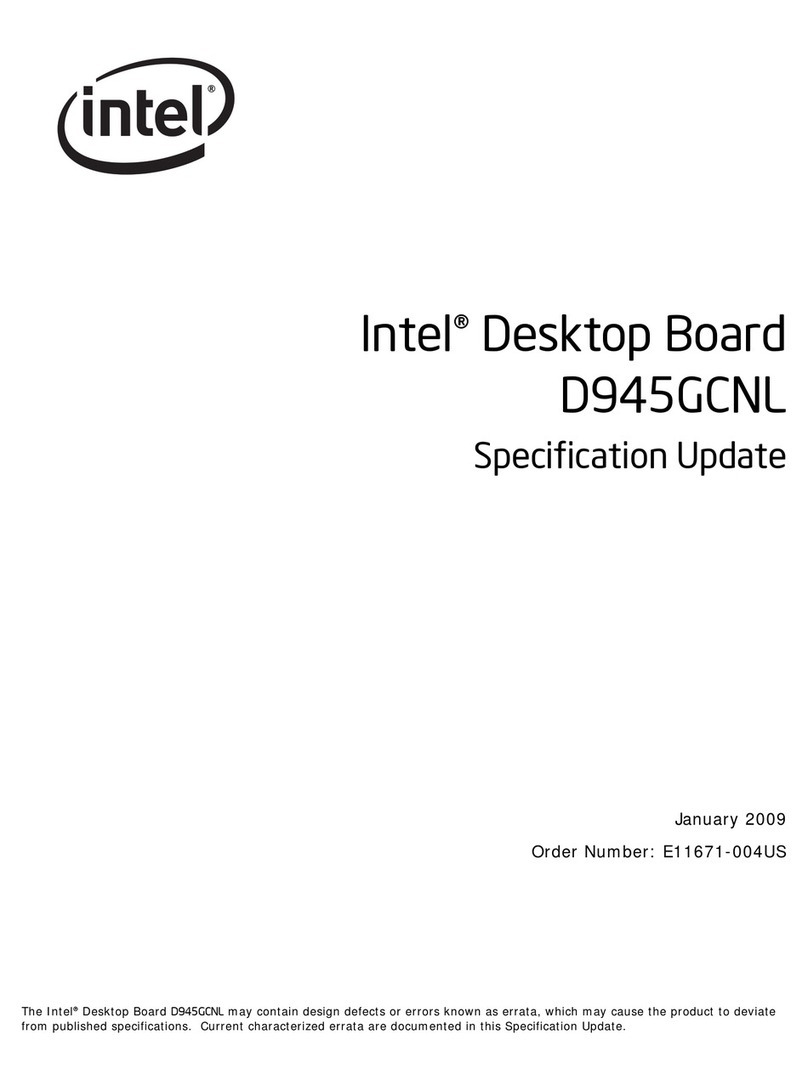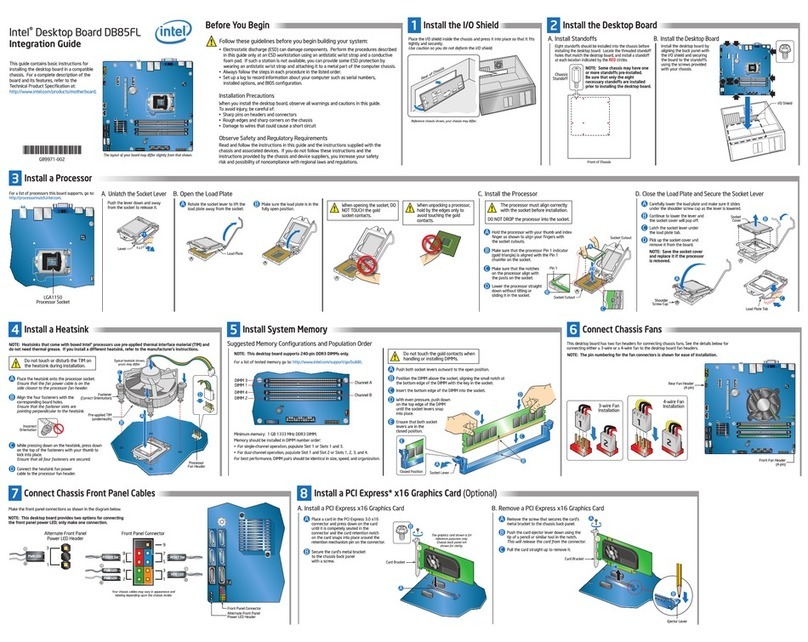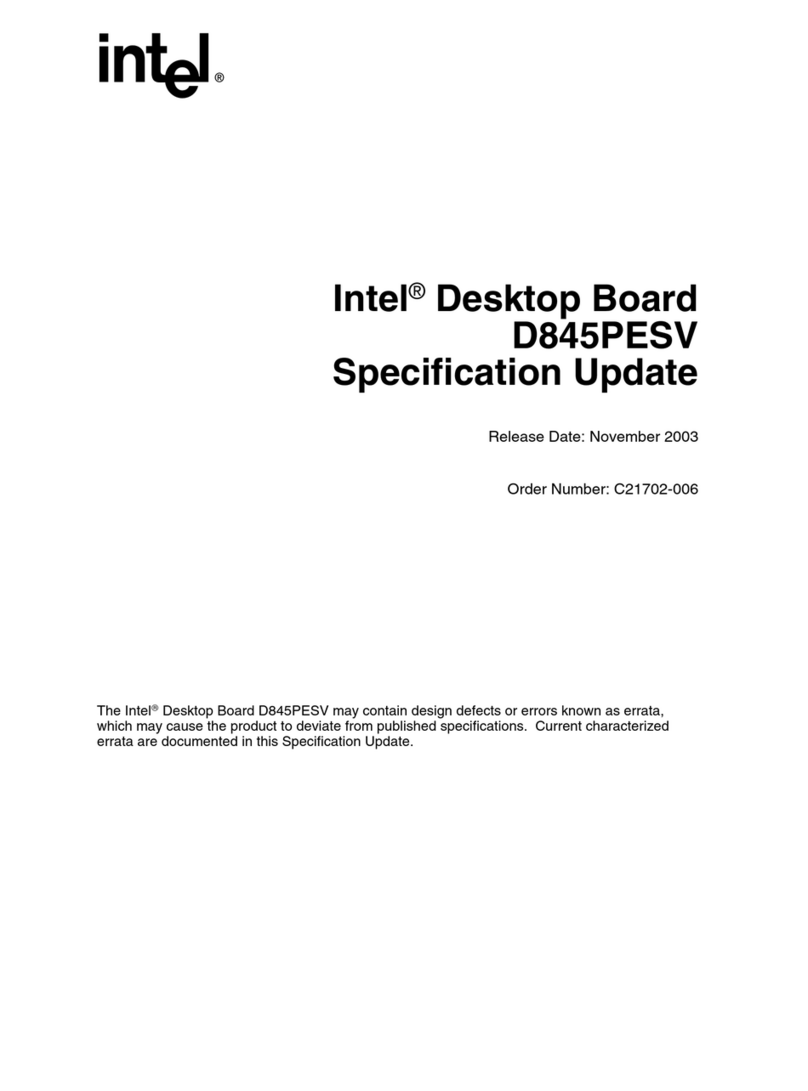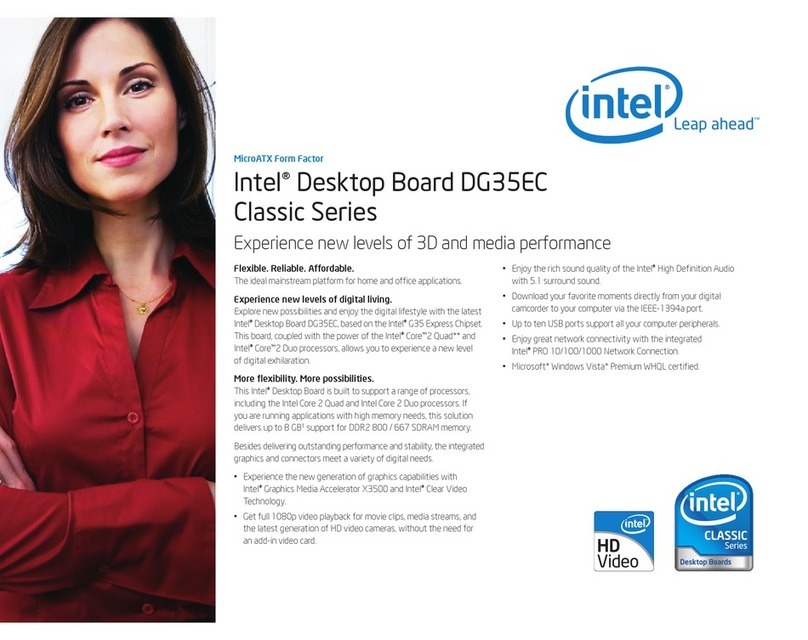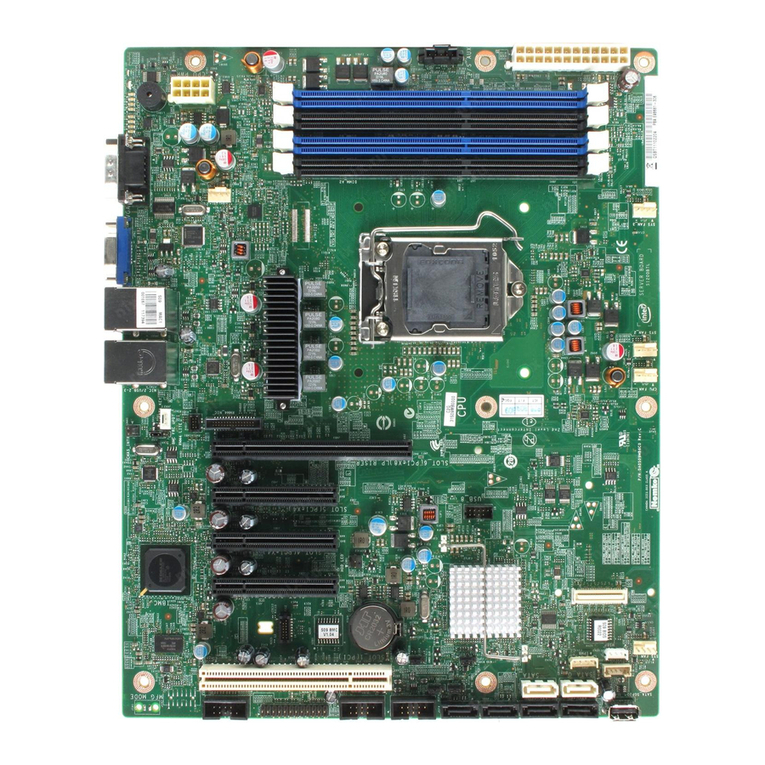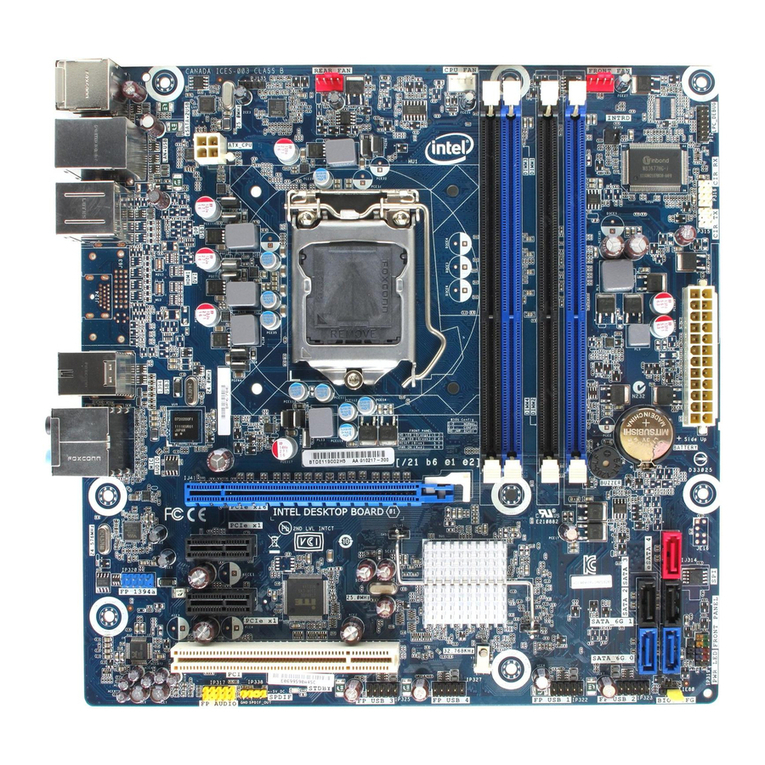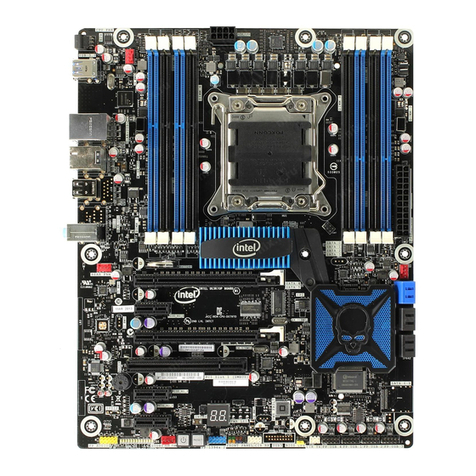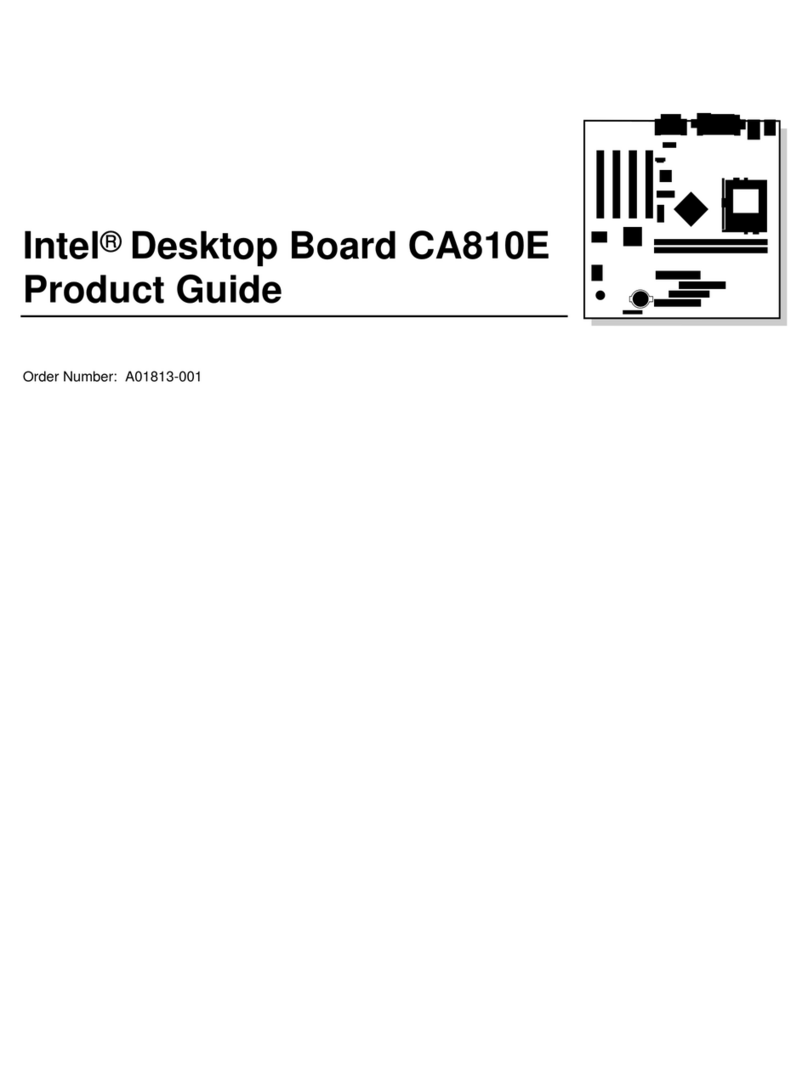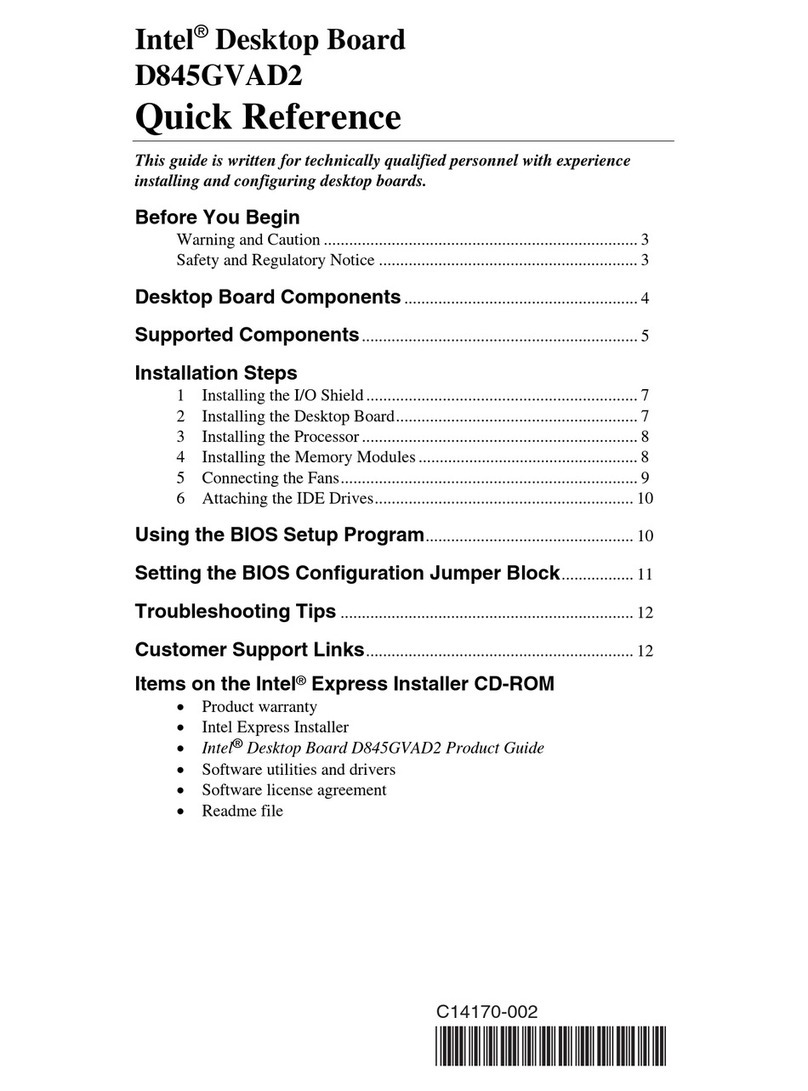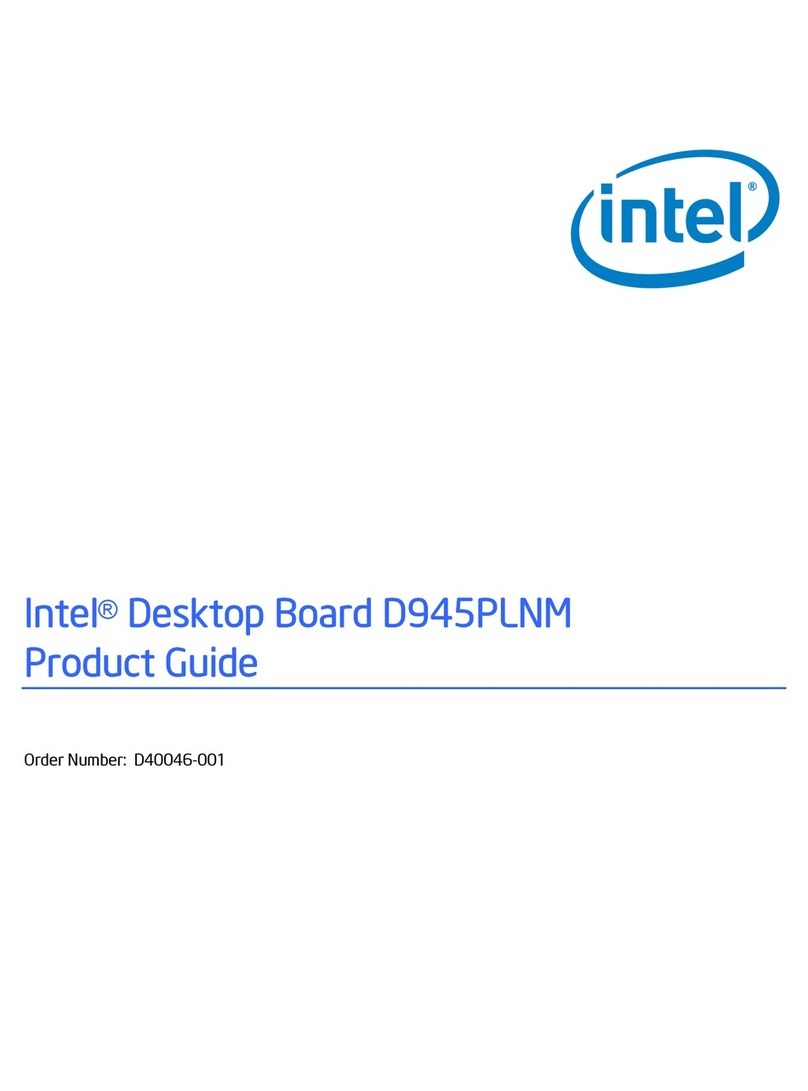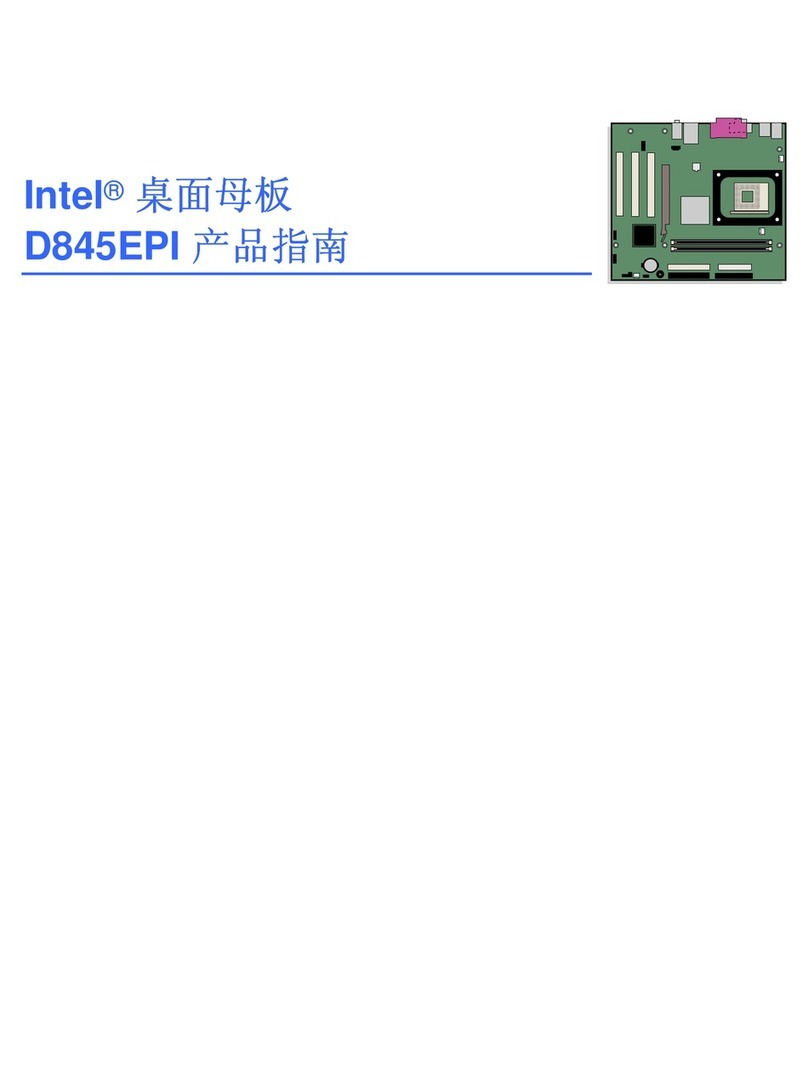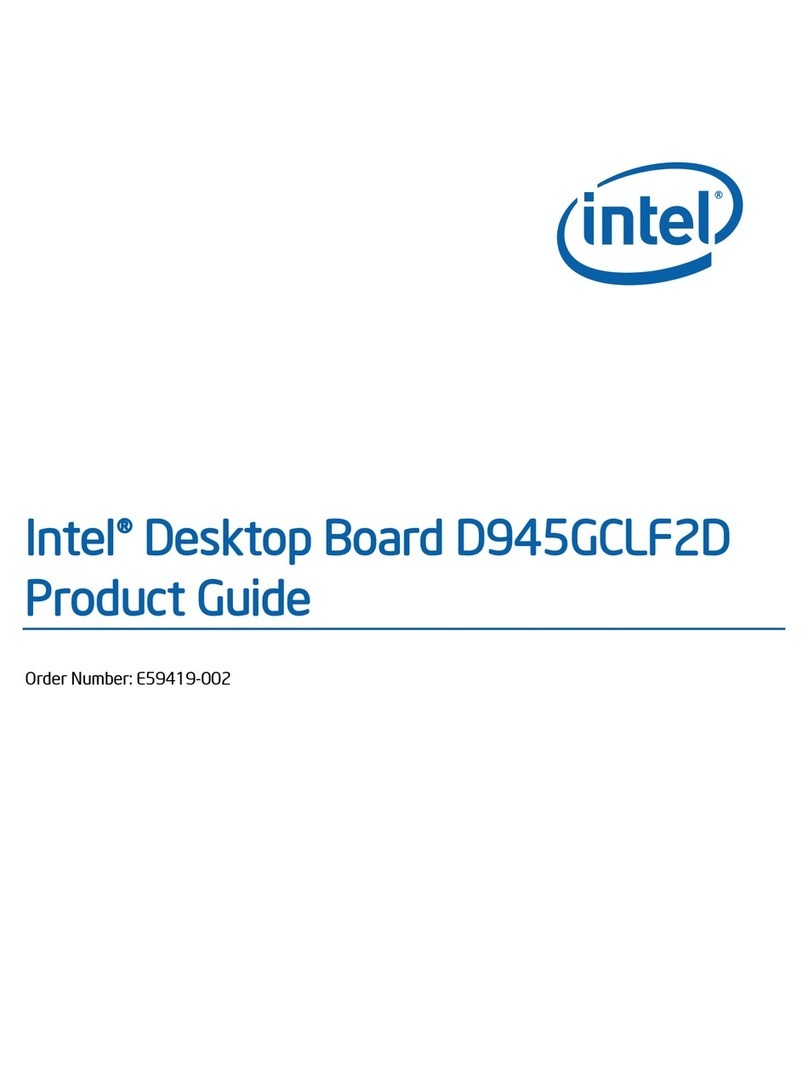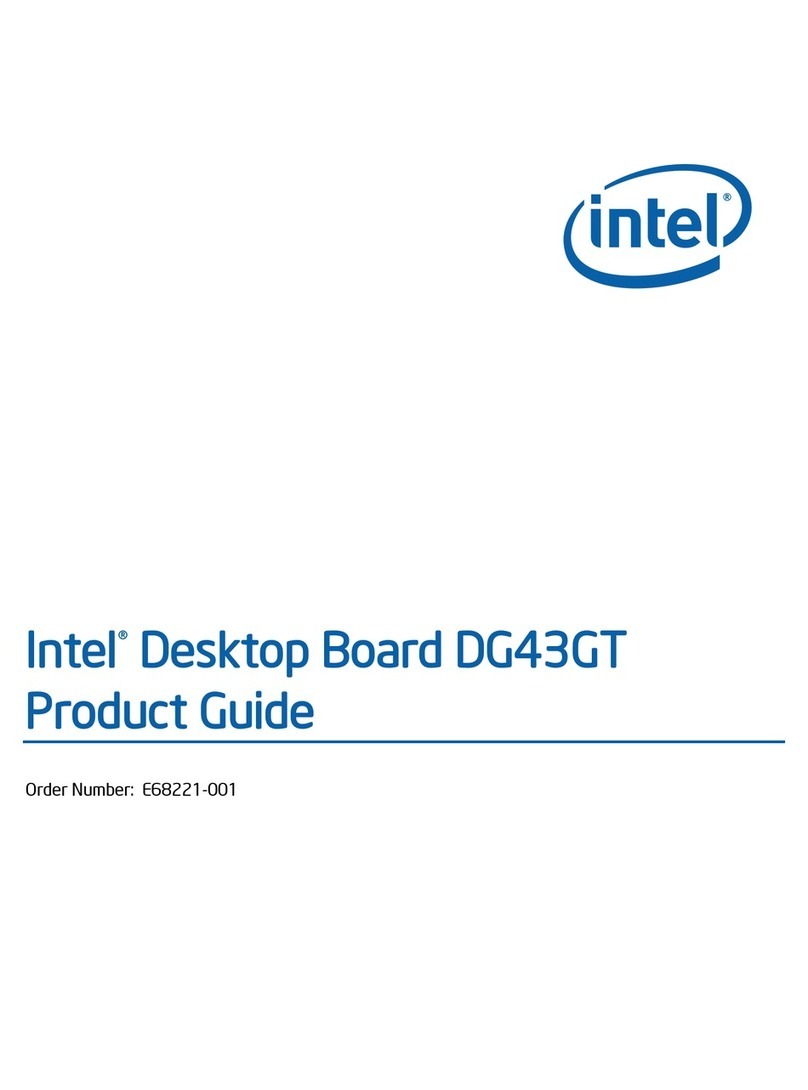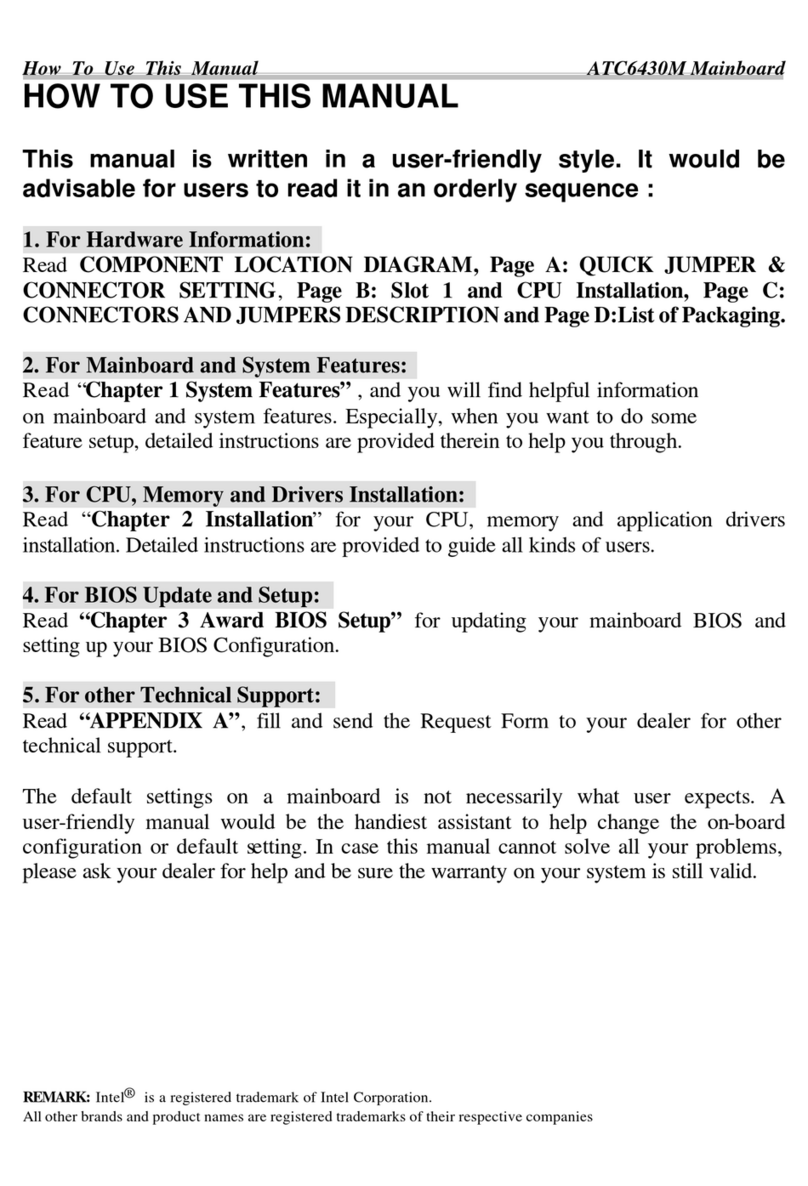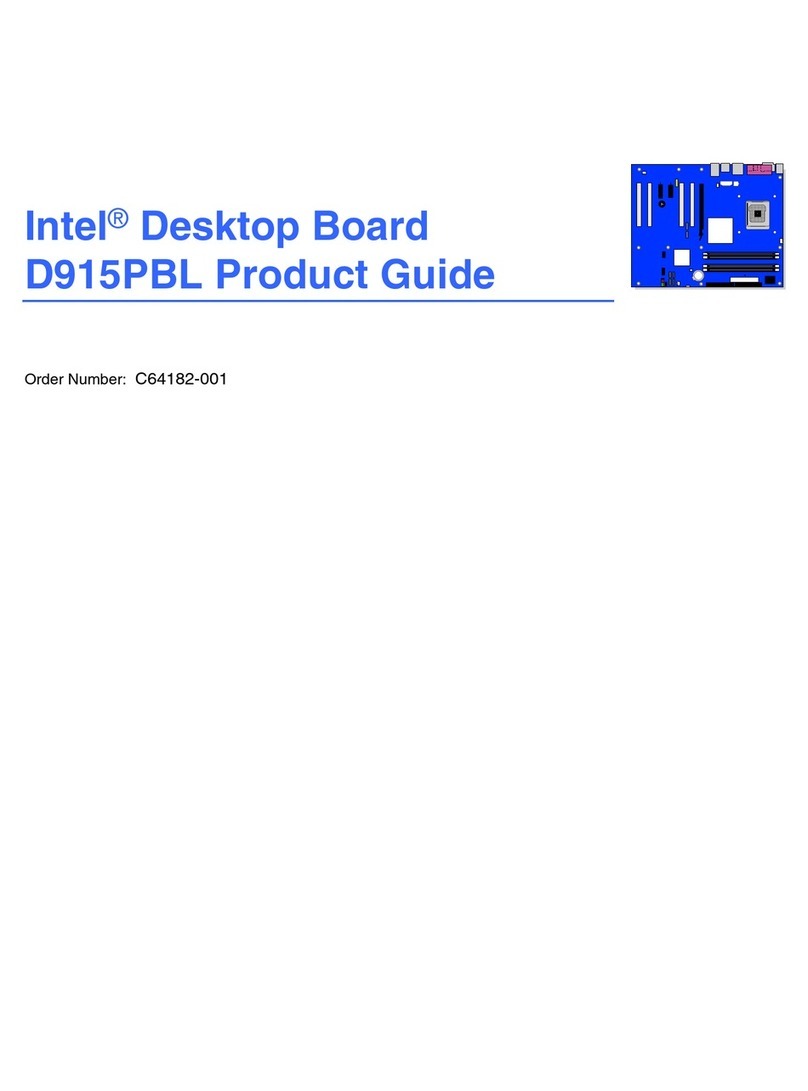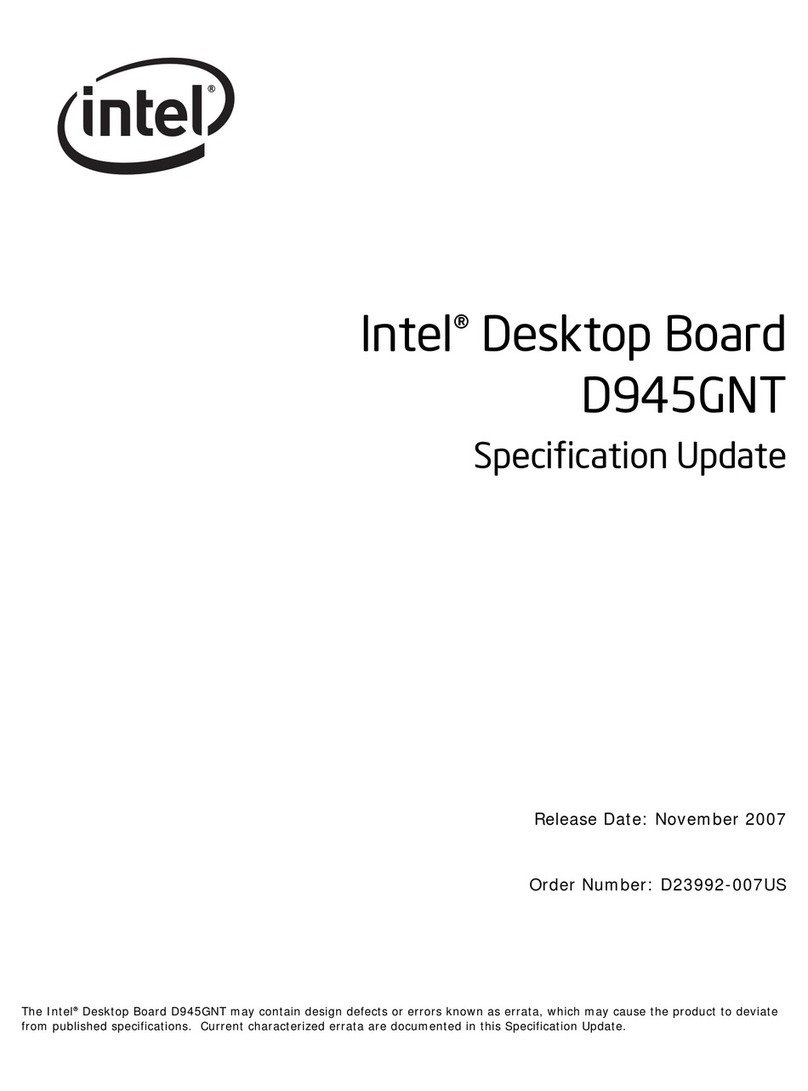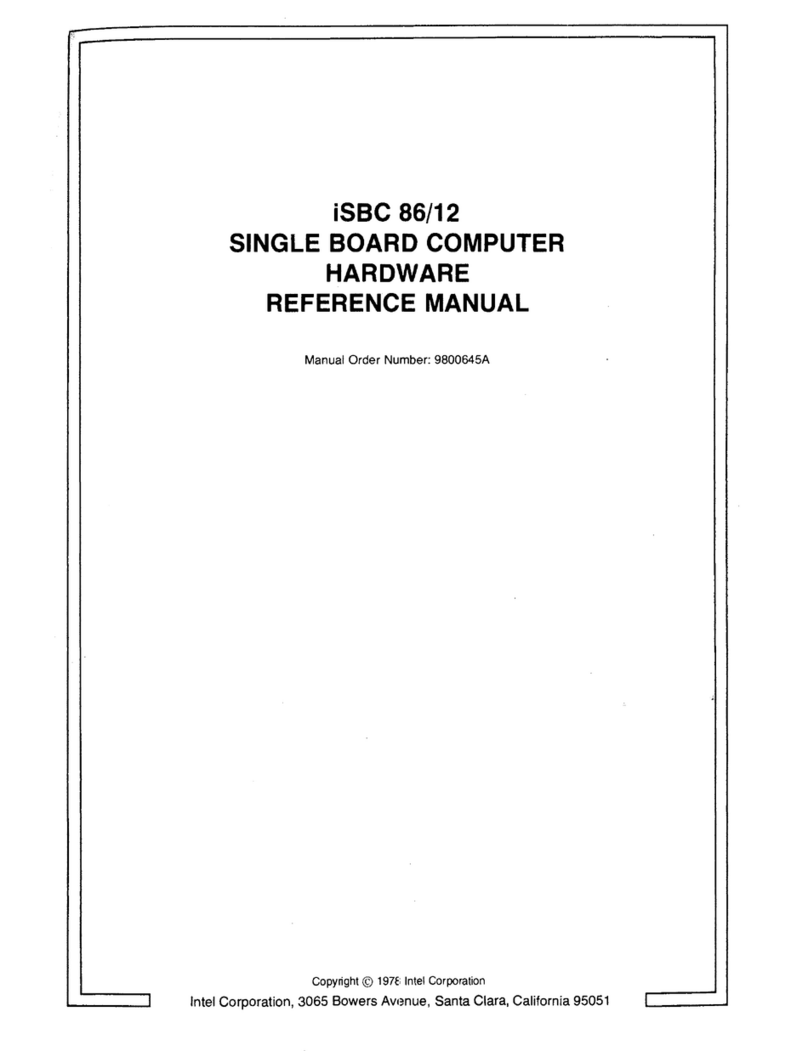
Intel Desktop Board DZ68AF Product Guide
vi
Installing and Removing a Processor.....................................................................31
Installing a Processor ..................................................................................31
Installing a Processor Fan Heat Sink..............................................................35
Connecting the Processor Fan Heat Sink Cable................................................35
Removing the Processor ..............................................................................35
Installing and Removing System Memory ..............................................................36
Guidelines for Dual Channel Memory Configuration..........................................36
Two or Four DIMMs .............................................................................36
Three DIMMs ......................................................................................37
Installing DIMMs ........................................................................................38
Removing DIMMs........................................................................................40
Installing and Removing PCI Express x16 Graphics Cards.........................................40
Installing a PCI Express x16 Graphics Card ....................................................40
Removing a PCI Express x16 Graphics Card....................................................42
Connecting SATA Drives......................................................................................43
Connecting to the Internal Headers ......................................................................44
Front Panel Audio Header ............................................................................45
IEEE 1394a Header.....................................................................................45
Chassis Intrusion Header .............................................................................46
Consumer IR (CIR) Headers .........................................................................46
Alternate Front Panel Power LED Header ........................................................47
Front Panel Header .....................................................................................47
Front Panel USB 2.0 Headers........................................................................48
S/PDIF Header ...........................................................................................48
Connecting to the Audio System...........................................................................49
Connecting Chassis Fan and Power Supply Cables...................................................50
Connecting a Chassis Fan ............................................................................50
Connecting Power Supply Cables ..................................................................51
Setting the BIOS Configuration Jumper .................................................................52
Clearing Passwords ............................................................................................53
Replacing the Battery .........................................................................................54
3Updating the BIOS
Updating the BIOS with the Intel®Express BIOS Update Utility.................................61
Updating the BIOS Using the F7 Function Key ........................................................62
Updating the BIOS with the ISO Image BIOS Update File or the Intel®Flash
Memory Update Utility...................................................................................63
Obtaining the BIOS Update File ....................................................................63
Updating the BIOS with the Intel Flash Memory Update Utility...........................63
Updating the BIOS with the ISO Image BIOS Update File .................................64
Recovering the BIOS...................................................................................65
4Configuring Intel®Smart Response Technology and RAID
Using Intel®RST
Configuring Intel Smart Response Technology........................................................67
Configuring RAID ...............................................................................................68
Configuring the BIOS ..................................................................................68
Creating Your RAID Set ...............................................................................68
Loading the Intel RST RAID Drivers and Software (Required for
Microsoft Windows XP Installation) ..........................................................69
Setting Up a “RAID Ready” System ...............................................................69
